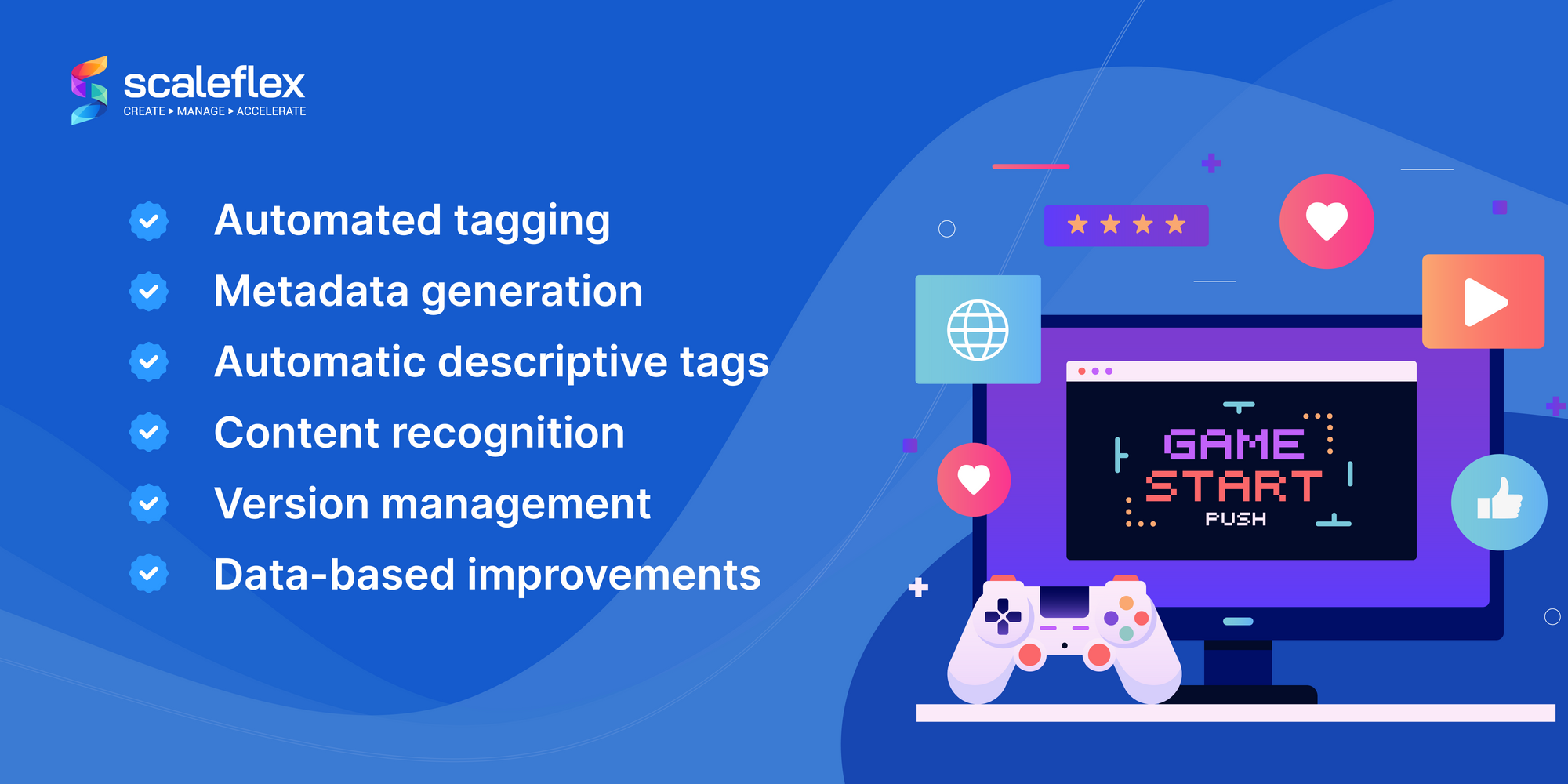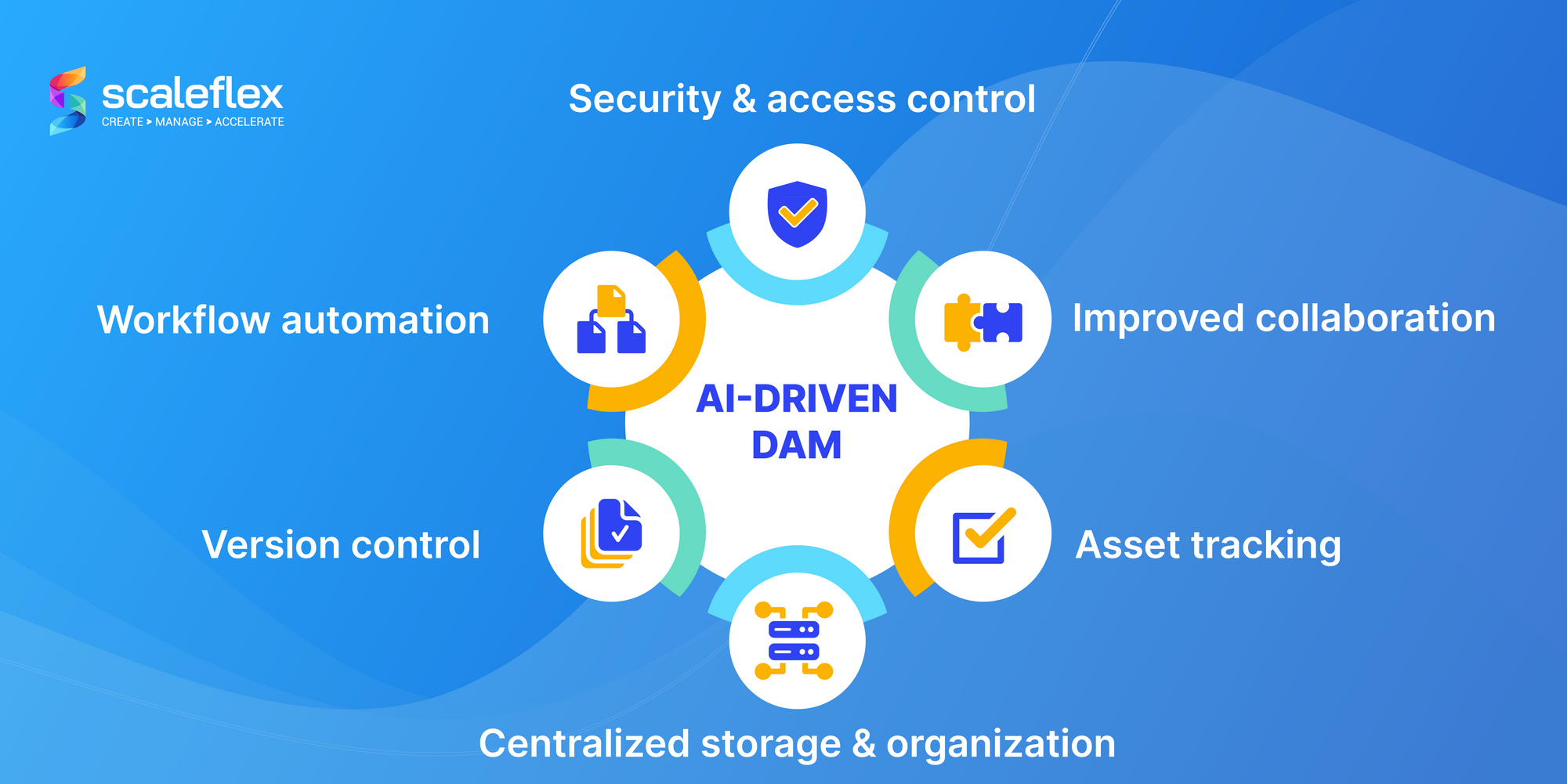DAM In Video Game Development Can Enhance Team Efficiency
Although not a topic of widespread knowledge, Digital Asset Management (DAM) software has a crucial role to play in the video game industry. Vast amounts of digital content are being created, organized and stored daily in this industry. As a centralized platform for teams to manage, distribute and retrieve digital assets, such as images, audio, video, 3D models and more, digital asset management for game studios is the ideal tool to support such work. The gaming industry relies heavily on its multimedia content, and as such, DAM software is essential to streamline workflows and ensure that all assets are readily available.
There are certain particularities and challenges in the video game industry. For once, the volume and complexity of digital assets is unique. Game developers and designers work with enormous files that are commonly spread across teams and locations. It goes without saying that the challenge of efficiently managing these assets becomes even more pronounced when paired with the demands for rapid iteration and collaboration. Furthermore, systems need to be put in place in order to ensure consistency and avoid redundancy, as well as effectively track and manage all versions of each asset.
Digital asset management for games addresses all these challenges, as it provides structured storage, robust search capabilities and automated workflows that aid in error prevention. When used by a game developer, digital asset management in the gaming industry can ensure that the right assets are always available, it can reduce downtime and enable more seamless collaboration across teams.
The need for DAM in the gaming industry
As we’ve rapidly explored, the gaming industry has a particular need for efficient digital asset management, driven particularly by the sheer volume and complexity of the assets that are involved in game development. These assets can include anything and everything, from concept art and character models, to sound effects, voiceovers and promotional materials. As video game projects slowly grow from conception to end, increasing in scope and scale, so does the need for an organized, streamlined approach to managing these resources. That’s where digital asset management for games can step in to address several critical needs.
One of the main needs a DAM software addresses is centralized storage and organization. For projects involving teams that are often spread across diverse locations and time zones, it is essential to have a single source of truth for all assets. DAM systems ensure that all team members have access to the latest versions of files, which reduces the risk of working with outdated or incorrect assets.
Another significant challenge for video game developers is version control and asset tracking. In game development, assets go through several iterations, which makes keeping track of changes daunting. DAM softwares allows teams to keep a detailed history of each asset, making it easy to revert to previous versions when needed. This capacity saves time and reduces errors as game developers can confidently work with corrected versions.
Another area where digital asset management in the gaming industry proves to be invaluable is collaboration and workflow automation. Developing video games involves multiple departments - we’re talking about design, animation, sound and marketing - all working in tandem to deliver the best possible results. DAM systems can simplify collaboration by providing the right tools for sharing, reviewing and approving assets. Furthermore, workflow automation features are able to streamline repetitive tasks, such as file naming conventions or distribution of assets to specific teams, which further improves efficiency.
Last, but definitely not least, security and access control are absolutely essential in an industry where intellectual property is highly valuable. A DAM software offers robust permissions settings, guaranteeing that only authorized personnel can access sensitive assets. Such a level of control can protect against unauthorized use and any potential leaks. This safeguards the creative content that is the foundation of all video game projects.

In a nutshell, DAM software meets all the gaming industry’s needs for organized storage, version control, collaborative efficiency and to top it off, security, which makes it an essential tool for modern-day game development.
The rise of challenges for DAM-less companies
The particular challenges of dealing with game development without a DAM system are worthy of note. Without a DAM, video game companies face several critical challenges that can hinder their development process. The most significant issue is disorganization. As assets are created and shared across various teams, if there is a lack of centralized storage this can lead to files being misplaced or duplicated, which would result in wasted time and effort.
Another element that can quickly become disruptive without the help of a DAM is version control. Developers may unknowingly work on outdated assets, which can lead to inconsistencies and potential delays as everyone scrambles to correct errors. Lacking a structured system for tracking asset iteration can also increase the risk of losing important work.
Finally, collaboration is one to suffer the absence of digital asset management for games as well. Without properly streamlined workflows, teams can struggle to coordinate effectively, meaning they will often resort to inefficient methods like cloud storage or shared folders. This disjointed approach can significantly slow down production and lead to miscommunication, ultimately affecting the quality and timeliness of the final product.
Key DAM features for game developers
There are a key range of features offered by DAM software that are particularly beneficial for video game development. The features specifically address the unique needs of the industry, and they ensure that teams are capable of managing their assets efficiently as well as collaborate effectively.
These are the main key features video game development can benefit from in a DAM:
- Centralized storage: this feature ensures that all assets -be it 3D models, textures, sound fillers or promotional materials- are all stored within the same location, that is accessible to all authorized team members. This kind of centralized storage reduces significantly the risk of asset duplication and it ensures that everyone works with the latest versions. This streamlines workflows and reduces errors.
- Version Control: in game development, assets will often go through several revisions. Manually tracking these changes can be tiring and error-inducing. Digital asset management for game studios will automatically track each version of an asset, allowing team members to easily revert to any previous version, or to compare the different iterations on a single project. This is a crucial feature that helps maintain consistency throughout the project, particularly in large teams where multiple people may be working the same assets.
- Metadata tagging and search capabilities: these are some of the most essential features a DAM can offer the video game industry. DAM facilitates asset tagging with relevant metadata. This makes them easier to locate through powerful search functions. It’s particularly useful for teams dealing with thousands of assets. Being able to quickly locate the correct asset can save enormous amounts of time and prevent hold-ups in the development process.
- Collaboration tools: within a DAM system, collaboration tools are designed to enhance team communication and efficiency. They have features such as asset sharing through brand portals, commenting and approval of workflows to enable seamless collaboration. This ensures effective and quicker feedback loops, ensuring that everyone stays aligned on the project’s progress.
- Automated workflows: automated workflows within the DAM will enhance efficiency by streamlining repetitive tasks. For example, DAM in game development can automatically handle certain tasks, such as file format conversion, asset distribution, or even enforcing naming conventions. These automations help to reduce manual work, as well as free up developers to focus on more complex tasks.
- Security management: this is an invaluable feature, since video game assets are precious intellectual property. DAM systems can provide robust security measures in order to protect them. The permission settings guarantee that only authorized personnel can access, modify or distribute assets. This considerably reduces the risk of potential leaks or unauthorized uses.
The revolution of AI
The future of digital asset management for game studios has gone through significant advancements, particularly with the integration of Artificial Intelligence. AI-driven features have completely revolutionized the way assets are managed, offering automated tagging and metadata generation. AI can also analyze assets and automatically generate descriptive tags. This makes search and retrieval even more efficient.
AI-powered content recognition and version management are also quickly becoming a reality for most DAM systems. This technology can enable DAM in game development to identify and categorize assets with great precision, as well as suggest improvements or optimizations based on data. AI in DAM is also capable of fluidifying collaborative processes, as it offers predictive tools that can suggest the next steps in workflows.
Finally, AI-driven security measures are greatly enhanced compared to traditional ones, and they help safeguard assets as they detect unusual activity and prevent potential breaches. These are just a few amongst the many emerging trends of AI in video games.

Key Takeaways
Since the video game industry is a fast-paced and asset-intensive industry, DAM software can play a critical role in streamlining workflows, guaranteeing consistency and protecting valuable intellectual property. Since it provides centralized storage, version control, and robust search capabilities, game development with digital asset management can address the unique challenges that video game developers face as they manage vast volumes of digital content.
If they do not implement a DAM, companies risk heavy disorganization, versioning errors and inefficient collaboration. This can all be detrimental to projects and slow down the development and quality of the final product. As the DAM landscape is eternally evolving, the latest introduction of AI to the game promises further enhancements in automation, workflows and security. Scaleflex DAM proposes a comprehensive DAM solution that can prove to be crucial in maintaining productivity and delivering high-quality products in today’s competitive markets.





